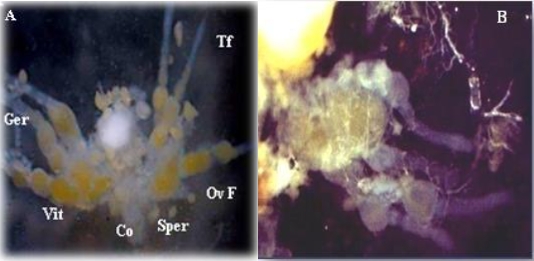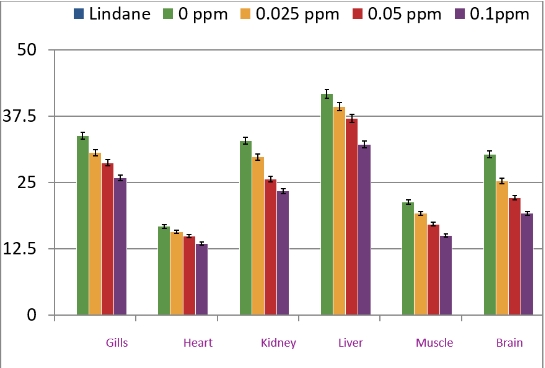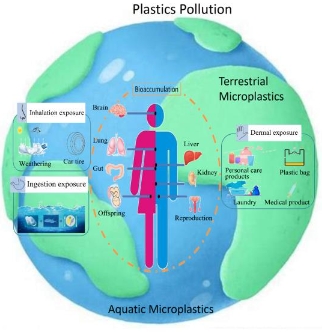Ecotoxicity of 3D printing material polylactic acid (PLA) on sea urchin Paracentrotus lividus
Abstract
In this study, the ecotoxicity of 3D printing material [polylactic acid (PLA)] was investigated with marine echinoderms; sea urchin Paracentrotus lividus. To achieve this goal, (i) fertilization success, spermiyotoxicity, and embriyotoxicity exposed to PLA concentrations (0.001, 0.005, 0.01, 0.1, and 1 g/L) were assessed for 72 h. For this purpose, our study is important to make comprehensive evaluations to ensure the safety of bioplastic formulations and to take measures to regulate the use of additives. At the same time, the additive used to increase the durability of bioplastic materials will also allow us to understand the long-term effects on ecosystems, wildlife, and human health. Our aim is to minimize possible harm and ensure that the overall environmental impact of bioplastics remains positive.
References
[1]Aznar M, Ubeda S, Dreolin N, et al. Determination of non-volatile components of a biodegradable food packaging material based on polyester and polylactic acid (PLA) and its migration to food simulants. Journal of Chromatography A. 2019; 1583: 1-8. doi: 10.1016/j.chroma.2018.10.055
[2]Bagheri AR, Laforsch C, Greiner A, et al. Fate of So‐Called Biodegradable Polymers in Seawater and Freshwater. Global Challenges. 2017; 1(4). doi: 10.1002/gch2.201700048
[3]European Bioplastics. Bioplastics market data. Available online: https://docs.european-bioplastics.org/publications/market_data/2022/Report_Bioplastics_Market_Data_2022_short_version.pdf (accessed on 1 April 2024).
[4]Ikada Y, Tsuji H. Biodegradable polyesters for medical and ecological applications. Macromolecular Rapid Communications. 2000; 21(3): 117-132. doi: 10.1002/(SICI)1521-3927(20000201)21:3<117::AID-MARC117>3.0.CO;2-X
[5]Chiulan I, Frone A, Brandabur C, et al. Recent Advances in 3D Printing of Aliphatic Polyesters. Bioengineering. 2017; 5(1): 2. doi: 10.3390/bioengineering5010002
[6]Montalvão GR, Moshrefi-Torbati M, Hamilton A, et al. Behaviour of 3D printed PLA and PLA-PHA in marine environments. IOP Conference Series: Earth and Environmental Science. 2020; 424(1): 012013. doi: 10.1088/1755-1315/424/1/012013
[7]Oliviero M, Tato T, Schiavo S, et al. Leachates of micronized plastic toys provoke embryotoxic effects upon sea urchin Paracentrotus lividus. Environmental Pollution. 2019; 247: 706-715. doi: 10.1016/j.envpol.2019.01.098
[8]Li X, Luo J, Zeng H, et al. Microplastics decrease the toxicity of sulfamethoxazole to marine algae (Skeletonema costatum) at the cellular and molecular levels. Science of The Total Environment. 2022; 824: 153855. doi: 10.1016/j.scitotenv.2022.153855
[9]Pagter E, Frias J, Kavanagh F, et al. Differences in microplastic abundances within demersal communities highlight the importance of an ecosystem-based approach to microplastic monitoring. Marine Pollution Bulletin. 2020; 160: 111644. doi: 10.1016/j.marpolbul.2020.111644
[10]Expósito N, Rovira J, Sierra J, et al. Levels of microplastics and their characteristics in molluscs from North-West Mediterranean Sea: Human intake. Marine Pollution Bulletin. 2022; 181: 113843. doi: 10.1016/j.marpolbul.2022.113843
[11]Arslan OC, Parlak H. Embryotoxic effects of nonylphenol and octylphenol in sea urchin Arbacia lixula. Ecotoxicology. 2007; 16(6): 439-444. doi: 10.1007/s10646-007-0147-z
[12]Hocking RR. Methods and Applications of Linear Models. Regression and the Analysis of Variance. Wiley; 1996.
[13]Stephens B, Azimi P, El Orch Z, et al. Ultrafine particle emissions from desktop 3D printers. Atmospheric Environment. 2013; 79: 334-339. doi: 10.1016/j.atmosenv.2013.06.050
[14]Rodríguez-Hernández AG, Muñoz-Tabares JA, Aguilar-Guzmán JC, et al. A novel and simple method for polyethylene terephthalate (PET) nanoparticle production. Environmental Science: Nano. 2019; 6(7): 2031-2036. doi: 10.1039/c9en00365g
[15]Green DS. Effects of microplastics on European flat oysters, Ostrea edulis and their associated benthic communities. Environmental Pollution. 2016; 216: 95-103. doi: 10.1016/j.envpol.2016.05.043
[16]Anderson G, Shenkar N. Potential effects of biodegradable single-use items in the sea: Polylactic acid (PLA) and solitary ascidians. Environmental Pollution. 2021; 268: 115364. doi: 10.1016/j.envpol.2020.115364
[17]Zhang L, Huang C, Xu Y, et al. Synthesis and characterization of antibacterial polylactic acid film incorporated with cinnamaldehyde inclusions for fruit packaging. International Journal of Biological Macromolecules. 2020; 164: 4547-4555. doi: 10.1016/j.ijbiomac.2020.09.065
[18]Mainwaring G, Foster JR, Lund V, Green T. Methyl methacrylate toxicity in rat nasal epithelium: studies of the mechanism of action and comparisons between species. Toxicology. 2001; 158(3):109-118. doi: 10.1016/S0300-483X(00)00332-2
[19]Macdonald NP, Zhu F, Hall CJ, et al. Assessment of biocompatibility of 3D printed photopolymers using zebrafish embryo toxicity assays. Lab on a Chip. 2016; 16(2): 291-297. doi: 10.1039/c5lc01374g
[20]Walpitagama M, Carve M, Douek AM, et al. Additives migrating from 3D-printed plastic induce developmental toxicity and neuro-behavioural alterations in early life zebrafish (Danio rerio). Aquatic Toxicology. 2019; 213: 105227. doi: 10.1016/j.aquatox.2019.105227
[21]An G, Na J, Song J, et al. Chronic toxicity of biodegradable microplastic (Polylactic acid) to Daphnia magna: A comparison with polyethylene terephthalate. Aquatic Toxicology. 2024; 266: 106790. doi: 10.1016/j.aquatox.2023.106790
[22]Ballentine M, Kennedy A, Melby N, et al. Acute and Chronic Toxicity of Uncured Resin Feedstocks for Vat Photopolymerization 3D Printing to a Cladoceran (Ceriodaphnia Dubia). Bulletin of Environmental Contamination and Toxicology. 2023; 110: 56. doi: 10.1007/s00128-023-03698-5
[23]Uribe-Echeverría T, Beiras R. Acute toxicity of bioplastic leachates to Paracentrotus lividus sea urchin larvae. Marine Environmental Research. 2022; 176: 105605. doi: 10.1016/j.marenvres.2022.105605
Copyright (c) 2024 Özlem Çakal Arslan, Kaan Arslan, Başak Topçu

This work is licensed under a Creative Commons Attribution 4.0 International License.








